#Červený Kostelec
Text

Artistic panel with female worker on the exterior façade of the house at Sokolská 29, 549 41 Červený Kostelec
#art#panel#plate#copper#metal#female worker#exterior#façade#house#Červený Kostelec#Rothkosteletz#Náchod#Червени Костелец#česká republika#tschechien#czech republic#Чехия#république tchèque#agitprop#Czechia
9 notes
·
View notes
Video
T423 009 Červený Kostelec por New Engine Desperado
Por Flickr:
Lokomotiva řady 423.0 The oldest operational machine manufactured in 1922. It was decommissioned by ČSD in 1970. Now owned by Railway Research Institute (VÚŽ) and maintained by the Letohrad railway club.
7 notes
·
View notes
Text



Domov seniorů Červený Kostelec
Soutěž 2023
Team: Jan Novotný, Kristýna Pokojová
Co-Team: Viktorie Dostálová, Tomáš Gelien, Jonáš Krýzl
0 notes
Text
Červený Kostelec vytvořil mezi školami veřejné prostranství s hřištěm na světové úrovni
Osmitisícové východočeské město Červený Kostelec se už nějakou dobu může pochlubit velmi povedeným veřejným prostranstvím mezi dvěma školami. V centru města jej vytvořila dvojice slovenských ateliéru 2021 a Laboratórium architektúry krajiny. Najdeme na něm do světle růžové oděný pavilon, dětské hřiště a posezení u pomníku. Vše zasazeno do úhledné vzrostlé zeleni.

„Na jižním okraji lokality se nachází frekventovaná silnice, která je od jádrové oblasti oddělena hmotou pavilonu. Ten je orientován tak, aby ortogonálně vymezil jádro areálu, vymezil potřebný prostor pro parkování na jižní straně komunikace a zároveň ponechal výhled na neoklasicistní budovu Městské spořitelny z roku 1928 od architekta Jindřicha Freiwalda se sochami Otakara Švece. Dnes v ní sídlí část obecního úřadu, mateřská škola a několik bytů. Pavilon byl navržen tak, aby poskytoval prostory pro drobné pohostinství (v současnosti cukrárna),“ uvádí početný tým autorů.
0 notes
Text
Kramflek
Tento 409,1 m n. m. vysoký zalesněný ostroh nad řekou Úpou, jenž obdržel své pojmenování od toho, že svým tvarem připomínal lidem podpatek střevíce, se nachází na pomezí katastrů Havlovic a Lhoty za Červeným Kostelcem, přičemž hranici obou obcí tvoří nejen řeka Úpa, ale též údolíčko mezi Vízmburkem a Kramflekem, které se nazývá „Potůčky“. Jeho středem protéká bezejmenný pravostranný přítok Úpy, který je zásobován množstvím zdejších pramenů. U silného pramene pod cestou k Vízmburku se na havlovickém katastru nachází měřící stanoviště Českého hydrometeorologického ústavu. Potok ústí do řeky Úpy v místě, které je nazýváno jako „Na Přelízce“. Tento název vznikl od toho, že zde býval dříve říční brod. Dodejme ještě, že přes Potůčky vede nejkratší cesta do Červeného Kostelce, kterou dříve chodili místní na vlak.
Jako je zajímavá jeho krajina s různými přírodními zákoutími, tak je originální rovněž jeho geologická struktura. Podél výše jmenovaného potůčku nalezneme holocénní nivní sedimenty, východně od řeky Úpy jsou spodněpermské červené pískovce, jež přecházejí ve svrchněpermské dolomitické pískovce, arkózy, arkózovité pískovce, místy i slepence s hlízami a polohami dolomitu, polohy prachovojílovitých pískovců. Ty se pak mění na kaolinické křemenné pískovce a arkózovité pískovce ze spodního triasu. Nad nimi je pak pásmo cenomanských křemenných, jílovitých a glaukonitických pískovců, dále pak turonských písčitých slínovců až spongilitických jílovců, místy silicifikovaných (opuky), na nichž pak najdeme směrem k Červenému Kostelci nezpevněné pleistocénní spraše a sprašové hlíny.
Kopec Kramflek, jenž je v indikační skice stabilního katastru z roku 1840 zaznamenán jako "Na kramfleku" (viz https://ags.cuzk.cz/archiv/openmap.html?typ=skicic&idrastru=HRA238018400), býval od nepaměti využíván jako panský les (zaznamenán již v mapě I. vojenského mapování z let 1764-1768 a jeho rektifikaci z let 1780-1783; viz http://oldmaps.geolab.cz/map_viewer.pl?lang=cs&map_root=1vm&map_region=ce&map_list=c063), o který přišel rod Schaumburg-Lippe až v roce 1945. Pouze drobné části náležely lhoteckým hospodářům. Zmínku o něm nalezneme rovněž v knize „Humor našeho kraje“ od Karla Pleskače z roku 1929, a to v povídce „Zázrak“: „...- Nepleťte do takových babských povídaček Pánaboha! - máchnul rukou mlynář. - Sedněte si a posuďte! (Myslivec si usedl.) Znám tak trochu Písmo ještě ze školy. V Písmě je psáno: „Máte-li víry třebas i jen za malinké takové zrnko a řeknete hoře, aby slezla do moře, tedy sleze okamžitě, na první vaše přikázání“. - Jste-li tedy tak veliké víry, řekněte v Havlovicích kopci Kramfleku, aby slezl do řeky. Sám uvidíte, že nic nesleze, všechno zůstane pěkně na svém místě. Z toho seznáte, že lidé nedělají, ani nemohou dělati zázraky. Rovněž není žádných strašidel. Lidé se přestrašují sami...“
Od předem jmenovaných dob se zde příliš nezměnilo, pokud nepočítáme několik katastrof, které postihly zdejší les v rámci staletí, i když jejich následky byly vždy postupně zahlazeny. Za zmínku stojí pouze to, že se tu od 2. poloviny 19. století postupně zvětšovaly výměry smrkových monokultur a pod kopcem začaly od počátku 70. let 20. století vznikat rekreační chaty. Nesmíme též opomenout to, že od přelomu 19. a 20. století se stal Kramflek jedním z turistických cílů, což lze dohledat v řadě různých publikací a průvodců, např. v knize "Letovisko Červený Kostelec. Střed kraje Mistra Jiráska (průvodce)" od Josefa Hurdálka z roku 1933, kdy již zde bylo nějakou dobu zřízeno turistické značení.
Dnes kolem kopce vede zelená a modrá turistická trasa, jež se kříží na rozcestí „Pod Kramflekem“. Od roku 2011 se nachází pod Kramflekem trasa naučné stezky „Po stopách erbu zlatého třmene“, která začíná v České Skalici a končí na Vízmburku. V roce 2014 byla ve stráni pod Kramflekem umístěna navíc informační tabule naučné stezky „Významné stromy obce Havlovice“, která se týká zdejších staletých modřínů, jejichž obvod kmene se pohybuje mezi 200-250 cm a výška dosahuje 35 m. Více na: http://www.havlovice.cz/kultura-a-turistika/vyznamne-stromy.

Pohled ke Kramfleku, v popředí dům čp. 143
0 notes
Text

"Kostelecký mrakodrap" - průmyslová budova - původně textilka, která svou výškou parametry mrakodrapu sice nesplňuje, nicméně je takto označována, byla postavena ve městě Červený Kostelec. Architekt Brno Bauer budovu navrhl ve slohu neoklasicismus.
0 notes
Photo
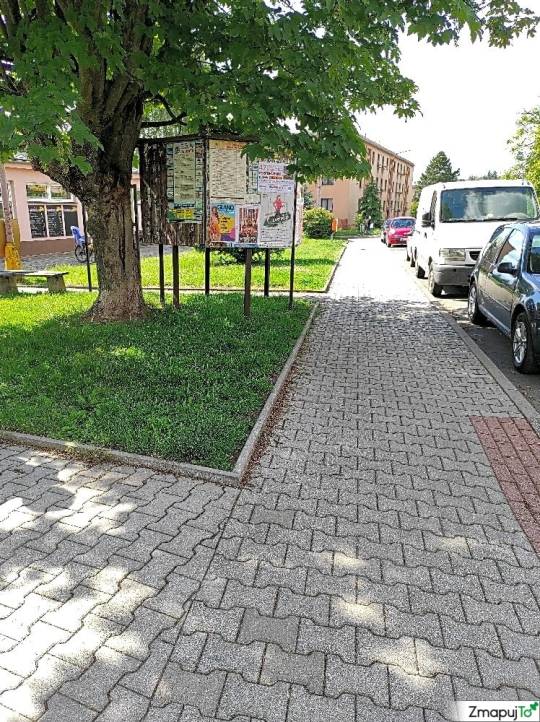
Podnět 200724 - Návrh na zlepšení - Červený Kostelec, Náchod #Návrhnazlepšení #ČervenýKostelec,Náchod #ZmapujTo #MobilniRozhlas https://bit.ly/3Q5ayfH
0 notes
Text
67. Mezinárodní folklorní festival roztančí Červený Kostelec
67. Mezinárodní folklorní festival roztančí Červený Kostelec
Mezinárodního folklorního festivalu se nezadržitelně blíží. Od 18. – 22. srpna si můžete v Červeném Kostelci opět užít pětidenní festival. I když z důvodu pandemie trochu netradičně méně folklorní a zaměřen více na hudbu. I letos bude z pochopitelných důvodů zaměřen výlučně na folklorní soubory z České republiky a Slovenska.
To vše bude doplněno skvělou muzikou, kterou obstará Police Symphony…

View On WordPress
0 notes
Text
Hand-Antennas: Protocols from Extrasensory Aesthetics | 2017
20/10–19/11 2017
Exhibition @ Josef Sudek Studio, Prague
Part of Fotograf Festival 2017
more info

How to understand each other without words? How to perceive without the senses? How to change something from the inside? How to move someone remotely?
HAND ANTENNAS
When Vilém Flusser – in his book Do universa technických obrazů (To the Universe of Technical Images) – says that today, when the world has disintegrated into abstracted points, we do not take things in our hands but rather control them by pressing buttons and keyboards, he actually describes new manual economics and a new attitude toward the world booming with the expansion of digital technologies. Hands represent a model of simple tools. They are extended by the form and function of these tools. But what if some devices are similar to hands, whether morphologically or functionally? The RUKA (Hand) antenna, whose name is an abbreviation of the names of its Czech inventors, František Kahuda and Aleš Rumler, resembles a hand not only with its name. As its creators say: “All psycho-energetic experiments prove that the head and hands–palms are parts of the human body emitting the most radiation [...].” Under certain circumstances, “a hand with outstretched fingers acts like an antenna”. For “psycho-energetics” or “psychotronics”, the special relationship between the biological and the technical is symptomatic. Like Flusser’s buttons, psychotronic technologies and devices ask for a different way of dealing with things. The materialistic approach to seemingly immaterial phenomena brings unprecedented possibilities for communication and manipulation. In a way, the dreams of telepathy, telekinesis and telegnosis or clairvoyance come true in technical apparatuses available today. From the perspective of psychics, however, the current state does not mean meeting their goals, but rather a new challenge.
METHOD, DISCOURSE, INSTITUTIONS
Psychotronics is trying to establish itself as a new science and meet the methodological, discursive and institutional requirements to do so. In Czechoslovakia, the most ardent promoters of psychotronics included František Kahuda and Zdeněk Rejdák. The local parapsychological tradition adapted to new conditions, absorbing many ideas from the USSR. The very term of psychotronics expresses the intention to take a “more scientific” approach to the studied phenomena. While similar phenomena were historically explored mostly by curious individuals or interest groups, new professionalism reached official institutions as well. Since the late 1960s to the early 1990s, there was a number of psychotronic institutions in Czechoslovakia, including the Coordinating Group for the Research of Psychotronics, the Psychoenergetic Laboratory (PEL) at the Technical University (ČVUT) in Prague and later at the Institute of Chemical Technology (VŠCHT) in Prague (headed by Kahuda), the Research Institution for Psychotronics and Juvenology at the same institution (headed by Rejdák), the Section for the Research of Psychotronics at the Committee of Applied Cybernetics of the Czech Science and Technology Society (ČVTS), the Department of Experimental Psychotronics at the Research Institute of Animal Production, the Commission of Psychotronics of the Gerontological Society of the Slovak Medical Society, the Commission of the Slovak Council of the Czechoslovak Scientific and Technological Society for Psychotronics, and more. Since 1973, there were also conferences of the International Society for Psychotronics. The first edition was held in Prague on 18–22 June 1973.
In Czechoslovakia, the term psychotronics is promoted by Zdeněk Rejdák who refuses the term parapsychology. According to Rejdák, psychotronics includes telepathy, telekinesis and telegnosis. Rejdák also refers to his French colleague Fernando Clerc who says: “We already have electronics, cybernetics, stereotronics – and what do we still lack? We can suggest the term psychotronics for the phenomena using the energy emitted during the thought process and the energy carrying the impulse of the human will.” According to Clerc, “every one of us has the ability of certain, though extremely weak action at a distance. It will not be long before we can focus our will, safely protected from external influences, to run relays and servo motors.” František Kahuda distinguishes between the Western psychotronics, which tries to explain the phenomena studied with “known forms of energy”, and the Czechoslovak and Soviet psychoenergetics, which assumes the existence of a distinctive psychic or mental energy. However, Kahuda did not maintain this distinction consistently and even he later resorted to the concept of psychotronics. The idea of the specific nature of the Eastern concept of mental energy compared to the Western one is somewhat misleading: although the Soviet scientist N. I. Kobozev came with the theory of bio-energetic particles, the so-called psychones, the Soviets generally concentrated on physically explainable psychotronic phenomena (such as electrostatics and electromagnetism) and explored the relationship between parapsychological phenomena and the known types of radiation. Kahuda resonates with the Leninist theory of reflection, which sees the psyche “as an image (projection) of the objective reality”, as “the supreme product of the matter organized in a special way” which is “the result of the transformation of the energy of an external stimulus into to the fact of consciousness.” Moreover, Kahuda, referring to V. M. Bechterew and P. P. Lazarev, assumes that “the interactions in the process of thinking in the human nervous system energetically manifest themselves also outside the human brain”, as attested by cases of telekinesis or telepathy. The theory of mentions is supposed to complement scientific knowledge: it describes the “third signal system” (in addition to the two signal systems defined by I. P. Pavlov), “the fifth type of interaction” (in addition to the four types of interaction – nuclear, electromagnetic, weak nuclear and gravitational – studied by physics), and “the sixth sense” (called “temp” by Kahuda). Kahuda’s belief in the material mention character of mental energy is still a subject of disputes among those who are interested in psychotronics, as can be seen chielfy in the discussion about the nature of the telepathic transmission.
Rejdák describes psychotronics as an interdisciplinary discipline and puts it into the context with other sciences studying the aspects of psychotronic phenomena: physics, communication science, mathematics, cybernetics, psychology, psychiatry, medicine, neurophysiology, physiology, anthropology, geology, cosmobiology, sociology, and bionics. The “limit” nature of the studied phenomena asks for a certain interdisciplinary approach as the interdisciplinary dimension of research is emphasized both by Rejdák and Kahuda. Kahuda frames the discipline by the Marxist notion of “one science”, which includes physics, psychology and psychophysiology, biology and sociology. Like his Soviet colleague P. K. Anochin, he believes that the research on the brain must combine the findings of neurophysiology and behaviourism. He finds the “systemic approach” particularly suitable.
STR AND SHR
According to its proponents, psychoenergetics will substantially influence the ongoing scientific and technological revolution. Kahuda predicts “that the first half of the twenty first century will be the age of a new, yet unknown, though existing mental energy. Its control as the highest value of man should have the form of an active intervention into the confident shaping of mental processes to form the human for the benefit of the future society in a more rational way than ever before.” Scientific knowledge and rational application of this mental energy will then ensure “not only technical and economic development, but also the elevation of interpersonal relationships in the advanced socialist society to the highest attainable level. The scientific and technological revolution also and, perhaps above all, concerns the man and all workers who make it possible.” A different view is held by Břetislav Kafka, sculptor and hypnotist from Červený Kostelec, in his book Člověk zítřka (The Man of Tomorrow, 1947): “Technical sciences take the man away from the human. They confirm his notion that progress is about having more perfect machines, not about being better today than we were yesterday.” According to Kafka, “the aim of humanity” is “material and spiritual well-being. Industrial civilization defers this aim. Modern civilization sacrificed the sense to the matter. The man had become accustomed to his life by repeating the same movement every day, by processing one element.” Zdeněk Rejdák, who used to visit Kafka like many others, later speaks of the need for a “scientific and human revolution”, which should complement and counterbalance the ongoing scientific and technological revolution if we do not want to “flood the world in the next century with mechanical and human robots and enhance the alienation and social decay”. In Rejdák’s model, the man and mankind stand in opposition to the dehumanizing technology although they are complementary with it. Kahuda’s psychoenergetic dialectical materialism and Rejdák’s psychotronic socialist humanism are quite similar.
PSYCHOTRONICS, INFORMATION SCIENCE AND CYBERNETICS
Most generally speaking, psychotronics deals with unusual or unexplained types of information transmission. According to Valdemar Grešík, the last director of the Psychoenergetic Laboratory (PEL), closed in 1991, psychotronics “is based on the assumption that man is able to acquire and transmit information in other, so far unknown ways or paths. [...] To a great extent, diagnosing and looking for various objects and healing, all represent kinds of information transmission – in an energetic form, of course.” In this context, Kahuda speaks of “mental information science” which “lies in decoding the information encoded in substances. Such use of mental energy emitted by a psychic as a subject of an information process, when the energy has a similar role like the quanta of electromagnetic energy broadcast by an antenna in short wavelengths (radio microwaves) to the target subject, from which the wave is reflected and received in intermittent broadcast by an image tube which then receives the information about the observed object [...]. In this process, the quanta of mental energy function as a mental radar while the emitted clusters of mental energy are qualitatively directed to the object of the process, i.e. contain the required information in the form of instruction and query on the way to the target, and in the form of feedback response on the way back to the source (brain). The detection of the target during the mental reflection is not only about a mere physical reflection, but also about finding the qualitative characteristics of the detected object.” Moreover, according to Kahuda, the mentions – unlike the known particles – can penetrate any obstacle, which makes them suitable for the “action at a distance”. Before Kahuda, the striking parallelism of telepathy and radiocommunications was mentioned also by Upton Sinclair in Mental Radio (1930) and B.B. Kazinskij in Biological Radio communications (1962). The effort to clarify the physical nature of parapsychological phenomena and the recurrent recognition of similarities between these phenomena and technological apparatuses is also noteworthy.
Kahuda says that “the use of a variety of devices for contactless communication with both the living and nonliving matter, using a psychophysical method, will certainly be very important one day”. According to Kahuda, the role of mentions is to transfer “quality-oriented information in various types of nonverbal mention communication”, including communication with animals and plants. Mental energy is supposed to be useful “especially in the area of communication, control, management, influencing various events”. This statement is strikingly reminiscent of the definition of cybernetics by Norbert Wiener as a science of control and communication in living organisms and machines. Besides the contemporary fascination with cybernetics (developed in the Easter Bloc since the late 1950s), there is also a certain structural similarity attracting the psychics. If hands in the eyes of psychics resemble antennas, the second key part of the human body, the head – and namely the brain, is obviously associated with computers. This comparison often occurs in the texts. Kahuda concludes that “man is not [unlike computers] only a ‘product’ of the social environment, a passive object of the internalized (interiorized) effects of the external environment, but uses its own self-regulatory system to create and change the external stimuli, to exteriorize them with ideas and work, thus actively influencing the world and acting as an active creature”. At the First International Conference of Psychotronics, Rejdák presented his paper “Psychotronics reveals new possibilities for cybernetics” which concluded that psychotronics “can help cybernetics solve one of the most difficult tasks – to help teach machines to create”.
The context of psychotronics and cybernetics can be detected at multiple levels, as shown by American researchers Lynn Schroeder and Sheila Ostrander who described the state of Czechoslovak psychotronics in the late 1960s in Psychic Discoveries behind the Iron Curtain, describing the Czech experiment whose executors decided to “think of telepathy as a channel with such a high degree of noise that it almost drowns the entire message. Information theory knows the means to overcome the problem of noise, such as calculations indicating, among other things, how many repetitions of one bit of information is necessary for proper reception. The Czechs used these calculations when they asked two people to try to telepathically send messages in a binary code back and forth while the computer found the necessary formula according to information theory.” In the experiment, telepathy reportedly proved to be more reliable than a field radio.
PYRAMIDS AND GENERATORS
Although psychics announce the immense impact of their discoveries in the near future, the practical application of the research is limited to relatively marginal cases. In 1959, one of the most important representatives of Czech psychotronics, radio engineer Karel Drbal won a patent for the “method for maintaining shaving knives and razors sharp” using small pyramids, made from for example, cardboard or plastic. To achieve the desired effect, it was necessary to orient the pyramids of certain shapes with respect to the Earth’s magnetic field. Drbal’s repeatedly applied for the patent which was allegedly granted to him only after the sceptical director of the Patent Office successfully used the invention himself.
The present results exceed the expectations and concern. The most attention is raised by the possibility to use mental energy for military purposes. Psychotronics seems to be a very strategic weapon for the cold war. A CIA report says that psychotronic weapons would mean a “serious threat to the military, diplomatic and security functions of the enemy. Transmitted energy would be quiet and hardly detectable by electronics (although the Soviets claim to have developed efficient sensors of biological energy) and the only needed source of energy would be a human operator.” Given the scarcity of available information, the US agents took the East European psychotronic research very seriously.
In this regard, CIA reports and the StB (Czech state police) were considerably interested in the so-called psychotronic generators produced by Robert Pavlita in his workshop in Lázně Bělohrad since the 1940s. These are mostly metal objects of various sizes and shapes that can be charged with biological energy under certain conditions. The efficiency of the generator depends on the form and material. Pavlita sees his generators as a kind of bioenergetic batteries that can be effectively controlled and regulated thanks to this technical extension. Using the generators, he can, for example, magnetize wood in a scientifically inexplicable way. Pavlita, who works as a textile technician, suggests that the generators can be used to purify water heavily polluted, among other things, during the production of textiles. Pavlita and his daughter Jana demonstrated the generators at the First International Conference of Psychotronics in Prague in 1973 as part of the lecture titled “The inductive effect on the human body mass”.
DOWSING RODS AND COAL
In 1991, physicists Luděk Pekárek and Milan Rojko published an article where they wrote: “In the past few years, the promotion of dowsers on TV and the radio, in daily press and entertainment and popular magazines in our country has caused that the national committees issue trade licences even to dowsers. Recently, geopathic zones on land and in flats are marked not only by individuals but also cooperatives and private companies. During the First Republic, dowsing was not even listed as a recognized craft by the Trade Chamber.” Since the late 1970s and 1980s, The Psychoenergetic Laboratory (PEL) conducted research on the possible use of dowsers in coalfields, and carried out projects like “Research of non-traditional methods of searching of anomalies in the mining front and quarry foothills and non-traditional forms of care for people in the North Bohemian brown coalfield” (for the North Bohemian brown coal mine in Most) or “Research on the protection of people in difficult mining conditions using mental energy” (for the Research Institute in Ostrava-Radvanice). These projects reportedly belong to the most successful PEL projects. Based on one of Kahuda’s suggestions to “implement the psychoenergetic research in the 8th Five-Year Plan”, a “scientific and production telesthesic association Ostrava Most, with a joint scientific council and specialized workplaces in the Research Institute in Ostrava-Radvanice (VVUÚ) and the Research Institute of Brown Coal in Most (VÚHU)”, was supposed to be established. The attitude of psychics to dowsing is still far from clear and depends on its application, as evidenced by Zdeněk Rejdák who joined the discussion in the Education Club of the Revolutionary Trade Union Movement (ROH) on physics and modernized superstition, held on 16 February 1989 by the Prague branch of the Union of Czechoslovak Mathematicians and Physicists. He said that marking “pathogenic zones in flats and prefabricated houses is for absolutely ‘untrustworthy and nonsensical’ and he thought that such activities should not be allowed and one should against protest against their authorization.”.
AUTOGRAPHY AND ELECTROPHOTOGRAPHY
The techniques deployed in psychotronic research also include photography. Attention is also paid to various forms of autography and electrography that makes invisible forms of radiation visible. In the Czech society, there were some prerequisites for such an interest, as evidenced by references to the pioneer of autography, Bartoloměj Navrátil, who discovered the “New kind of electrical patterns” (published in Časopis pro pěstování matematiky a fyziky in 1889). A special place belongs to Kirlian photography, which was the subject of lectures of many speakers at the First International Conference of Psychotronic in Prague in 1973, including the Kirlians themselves. According to Kahuda, to explain the Kirlian effect, though proven in many experiments, one needs the “materialistic mention theory of fundamental material radiation”. Kahuda’s materialism, however, still pays attention to the social dimension, stating that the intensity and colouring of pictures of human organs depend on the mental state of man and vary “particularly according to the function of the man in nature and the society”.
One of the PEL research groups attempts to capture the mysterious radiation from Pavlita’s bio-generators on photosensitive material and experimentally prove the existence of mentions. These experiments are inspired by the research led by psychiatrist Jule Eisenbud in the Colorado Psychiatric Hospital in Denver in the 1960s. Eisenbud worked with psychic Ted Serios who used his psychic powers to create “thoughtography” on Polaroid film. Milan Smrž describes a series of experiments trying to capture mental energy on photosensitive paper in his research report for the project entitled “Physical chemical detection of mental energy” carried out by the PEL in 1980. On some photographic materials, there were strange spots, including “characteristic colons”. Although the report, written by Milan Smrž, mentions a number of inconclusive tests and does not provide a definite conclusion about the origin of the mysterious patterns, Kahuda summarizes the experiment in the darkroom in the following way: “To avoid doubt that it is the interaction of aura, existing in the space around the head of the psychic, with the film emulsion, and not a direct contact of the emulsion with the head surface, a film strip was inserted into a ‘crown’ made of stiff/drawing paper and deposited in the emulsion to the outside circumference of the crown, so that the fundamental primary mention radiation first passed through a strong paper barrier, then ionized the air in the gaps before the film emulsion, and continuously exposed the film emulsion with the resulting secondary photon radiation. This action took place simultaneously in the space around the head of the emitter. Different colours in different places of the film strip indicate various actions and functions of the human brain tissue at the time of exposure under the psychological and medical condition of the emitter. This function of the human aura could also be used in practice to distinguish between different kinds of the brain activity, similarly to the AG and EG [...].”
Vojtěch Märc

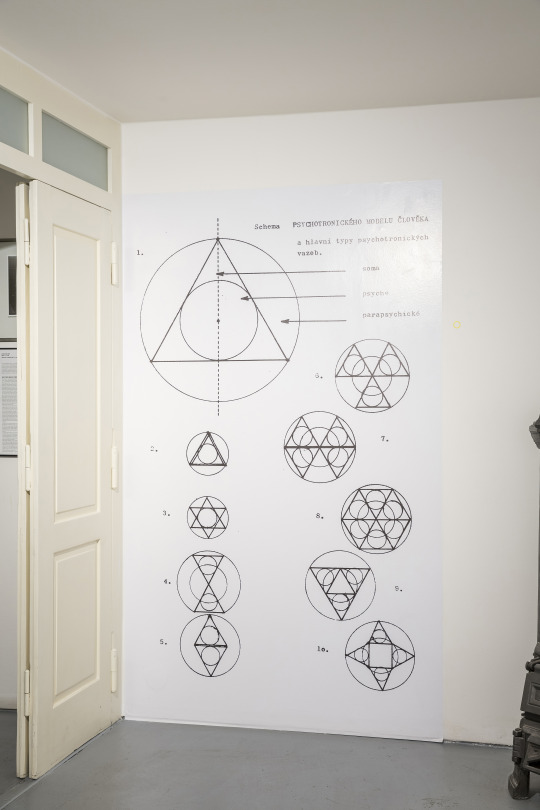






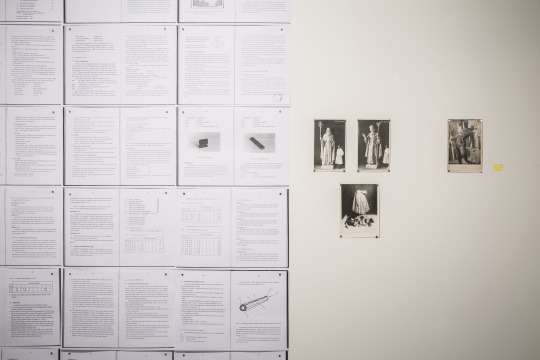



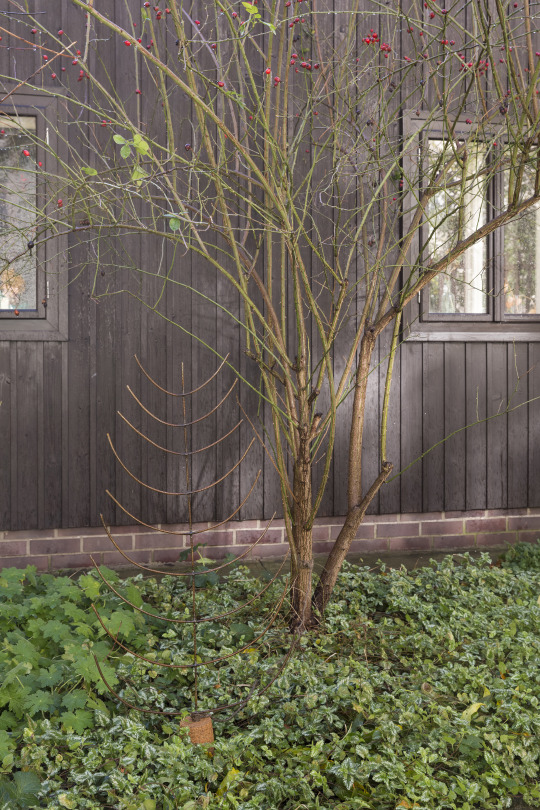

3 notes
·
View notes
Text
Pokračujeme 2. den po východočeské Svatojakubské cestě benefičním putováním na podporu Domova Svatého Josefa v Žirči dalším úsekem z Červeného Kostelce přes Ratibořice a Českou Skalici do Chvalkovic.
youtube
Tento den se k nám přidali nový účastníci. Jednak 2 nevidomé holky a také zahraniční delegace.
Jako první jsme si udělali zastávku v místní výrobně bylinkových sirupů Camellus, kterou provozuje stejná Oblastní Charita jako Domov Svatého Josefa. Čekala nás degustace a prohlídka výrobny.
Dále jsme pokračovali po Svatojakubské cestě do Kostela Navštívení Panny Marie, kde nás místní paní seznámila se strhující historii tohoto místa.
Cesta pokračovala přes Babiččino údolí se zastávkou ve mlýně na oběd a u zámku Ratibořice. V České Skalici jsme se zase občerstvili místní zmrzlinou 😉
V podvečer jsme dorazili do Chvalkovic, kde nás místní pán starosta nechal přespat zdarma v tělocvičně u hasičů za což mu děkujeme.
Večer opékání nad táborákem a v noci spánek v doprovodu kakofonie žab z bývalé plovárny 😀
This slideshow requires JavaScript.
Benefiční putování: úsek Červený Kostelec – Chvalkovice Pokračujeme 2. den po východočeské Svatojakubské cestě benefičním putováním na podporu Domova Svatého Josefa v Žirči…
#Červený Kostelec#Česká Skalice#Chvalkovice#Ratibořice#Svatojakubská cesta#Východočeská Svatojakubská cesta
0 notes
Text

Otakar Švec – sculpture Woman (1928)
Originally on the building of the Municipal Savings Bank, which now serves the needs of the Municipal Office. Woman in a long flowing dress. In her right hand she holds a cartouche with the town emblem and her left hand rests on her waist. Her head is turned towards the entrance to the building.
Otakar Švec – socha Žena (1928)
Původně na budově Městské spořitelny, která nyní slouží potřebám Městského úřadu. Žena v dlouhých splývavých šatech. V pravé ruce drží kartuši s městským znakem a levou rukou se opírá v pase. Hlavu má natočenou směrem ke vstupu do budovy.
Komenského č. p. 26, 549 41 Červený Kostelec, Česká republika
#Otakár Švec#sculpture#socha#Žena#woman#Městská spořitelna#Městský úřad#Červený Kostelec#Rothkosteletz#Náchod#Червени Костелец#česká republika#tschechien#czech republic#Чехия#république tchèque#Statue#скульптура#neo classical#avantgarde#interwar period
3 notes
·
View notes
Video
854.207 Červený Kostelec 15. srpna 2012 por Pavel Šturm
Por Flickr:
Hydra „Radka“ v čele spěšného vlaku 1784 z Pardubic do Trutnova projíždí kolem vjezdového návěstidla do Červeného Kostelce. Motorový vůz 854.207 byl rekonstruován z motorového vozu 852.007. Po ukončené rekonstrukci ve firmě PARS Šumperk byl 31. května 2003 předán do depa Praha Vršovice, zde vůz sloužil přes dva roky. Následně byl předán do depa Česká Třebová (PJ Trutnov), kde vůz spolehlivě jezdil až do 11. prosince 2013, kdy přešel do stavu depa v Brně v Horních Heršpicích. K přelakování vozu z červeno-krémové barvy na modrobílou došlo během vyvazovací opravy v lednu 2015.
3 notes
·
View notes
Photo

Den architektury 2021
Jako každý rok přinášíme z bohatého programu Dne architektury výběr akcí zaměřených na průmyslové dědictví
2. 10. BEROUN – ELEKTRICKÁ ENERGIE V PRŮBĚHU ČASU
2. 10. BRATISLAVA – AKO ĎALEJ, INDUSTRIÁL?
2. 10. BROUMOV – ŽELEZNIČNÍ TRAŤ
2. 10. ČERVENÝ KOSTELEC – OD BAROKA K MODERNÍMU MĚSTU
2. 10. FRÝDLANT – OD MLÝNŮ K TOVÁRNÁM ÚDOLÍM SMĚDÉ
3. 10. KAMENICKÝ ŠENOV – CESTY SKLÁŘŮ
2. 10. KLADNO – (NEJEN) O BESSEMEROVĚ KONVERTOROVÉ OCELÁRNĚ
2. 10. KRISTIÁNOV (BEDŘICHOV) – SKLÁRNY A SKLÁŘI
2. 10. KUTNÁ HORA – TELLERŮV CUKROVAR
2. a 3. 10. KYJOV U KRÁSNÉ LÍPY – TOVÁRNA MAJÁK
2. 10. LIBEREC – KOLÉBKA MOTORISMU
2. 10. LIBEREC – PO STOPÁCH ZANIKLÝCH TRAMVAJOVÝCH TRATÍ
3. 10. LITOMĚŘICE – RAKOUSKOU SEVEROZÁPADNÍ DRÁHOU II
2. 10. NYMBURK – DESET LET, INSPIRACE ODJINUD A DĚDICTVÍ ŽELEZNICE
3. 10. OLOMOUC – HANÁCKOU STŘELOU DO NÁMĚŠTĚ A ZPĚT
2. 10. OPAVA – MĚNÍRNA ELEKTRICKÉHO PROUDU
3. 10. OSTRAVA – HLAVNÍ NÁDRAŽÍ OSTRAVA
3. 10. OSTRAVA – NÁDRAŽÍ OSTRAVA-SVINOV
3. 10. OSTRAVA – NÁDRAŽÍ OSTRAVA-VÍTKOVICE
3. 10. OSTRAVA – TŘI NÁDRAŽÍ, TŘI PŘÍBĚHY
2. 10. PRAHA – CESTOVÁNÍ NA ÚROVNI? POD ZEMÍ!
5. 10. PRAHA – DRÁŽNÍ PROMENÁDA
1. 10. PRAHA – INDUSTRIÁLNÍ ARCHITEKTURA
3. 10. PRAHA – OKOLO MASARYKOVA NÁDRAŽÍ
3. 10. PRAHA – PRAGEROVA CENTRÁLNÍ KOTELNA
3. 10. PRAHA – PROMĚNA NÁDRAŽÍ NA SMÍCHOVĚ
2. 10. PRAHA – PUTOVÁNÍ PO PRAŽSKÝCH NÁDRAŽÍCH
2. 10. PRAHA – VI PER-MUZEUM
3. 10. PRAHA – VIZE NÁKLADOVÉHO NÁDRAŽÍ ŽIŽKOV
3. 10. PRAHA – VLAKEM Z MASARYČKY
3. 10. PRAHA – VRŠOVICKÁ VODÁRNA V MICHLI
3. a 6. 10. PODĚBRADY – RONDOKUBISTICKÝ VYSÍLAČ
3. 10. ŘEVNICE – VLAKEM, VOZEM, LODÍ, PĚŠKY… KOLEM
3. 10. SEZIMOVO ÚSTÍ – BAŤOVSKÁ KOLONIE
3. 10. SEZIMOVO ÚSTÍ – NĚMÁ KOLONIE
4. 10. VRATISLAVICE NAD NISOU – KOMÍNY A DOLY
3. 10. ZLÍN – DOPRAVA JAKO ZÁKLAD
2. 10. ZLÍN – ZÓNA ZLÍN
0 notes
Photo

Střet vlaku R 924 s autem na železničním přejezdu – V úseku: Červený Kostelec – Starkoč Střet vlaku R 924 s autem na železničním přejezdu - V úseku: Červený Kostelec – Starkoč
0 notes
Text
Vejroviny
Tento lesní masiv, který se všemi svými výběžky přesahuje plošně 73,5 ha, se nachází mezi podkrkonošskými obcemi Křížanovem, Mečovem, Litoboří, Hořičkami, Chlístovem a Mezilečím. Již od svých počátků nesl pojmenování „Vejroviny“ (v indikačních skicách stabilního katastru z roku 1840 je psáno jako „Wegrowyn“), teprve ve 20. století při honbě za spisovnou češtinou byl název změněn na „Výroviny“. Usuzuje se, že na jeho místě se nacházel Vejrov (Výrov), ves pustá a zašlá, která byla naposled zmíněna v roce 1534 při prodeji rýzmburského panství. Kromě tohoto jména se vyskytuje v německých vojenských mapách označení Sand-Berg, které v nich bylo používáno ještě během 2. světové války.
Již od 19. století býval tento les propagován jako cíl výletníků a nadšených houbařů, což zmiňuje též František Vlastimil Kodym ve svém díle „Z domova i z ciziny“, kde mj. píše: „Nejbližší okolí Hořiček poskytuje pěkné procházky a vyhlídky. Nejlepší z procházek jest cesta do „Vejrovin“ a do „Husího Krku“. Vyhlídka je čarokrásná a velice rozsáhlá zvláště od domu, v němž nachází se nemocnice MUDra. Kutíka, od studnice pod hostincem Bartuškovým a hlavně od „Šutrovníku“ u „Vejrovin“. Viděti odtud Zvičín, Kunětickou horu, Josefov s Jaroměří, Hradec Králové, Opočno, Nové Město, Kostelec Červený a jiná místa důležitá.“ Podobně byl zaměřen jeho článek, který vyšel v "Krakonoši" 12. října 1884. František Kolařík je zase před 2. světovou válkou propagoval z mykologického hlediska, zejména v „Časopisu československých houbařů“.
Na rozdíl od blízkých „Barchovin“ není jejich povrch tak zvlněný. Nejvyšším bodem této lokality je bezejmenný kopec, který se nachází na severu Vejrovin a je vklíněn mezi okresní silnici a cestu z Křížanova do Litoboře (470,8 m n. m.). Další vysoký bod se nachází severozápadně od Kalousova (467,1 m n. m.) a nedaleký vodojem je položen ve výšce 463,57 m n. m. Vedle nich tu najdeme množství propadlin, jež vznikly jak těžbou zeminy, tak i lámáním kamene.
Již od svých počátků býval les panským statkem. Naposledy patřil šlechtickému rodu Schaumburg-Lippe, vlastníkům náchodského panství, přičemž díky pozemkové reformě po vzniku ČSR se většina z něj rozdělila mezi místní drobné rolníky (malá část byla obecním a soukromým majetkem již v období sestavování stabilního katastru, např. v Litoboři měli kousek Vejrovin Rosalie Drtinová z čp. 19 a Antonín Drtina z čp. 88, přičemž prvně zmíněná rolnice byla též majitelkou zdejšího lomu na kámen) a jeho zbytek připadl státu po roce 1945, kdy byl podle Benešových dekretů zabaven veškerý majetek rodu ze Schaumburg-Lippe. Část lesa zakoupilo během zmíněné pozemkové reformy také město Jaroměř, jež ho mělo dříve jako samostatné hájemství a prodej veškerého užitkového dřeva z něho probíhal prostřednictvím vypsaného nabídkového řízení. Jednalo se o oddělení 14 o výměře 34,68 ha, které pak bylo v letech 1953-1991 státním majetkem a město ho převzalo zpět od Lesního závodu Opočno 19. srpna 1991. Hajným pro něj byl od roku 1928 Josef Vlček z Kalousova. U začátku lesa se též shromažďovaly různé slavnostní průvody hořičských občanů, z nichž zmiňme ten lidovecký v červenci 1937, který byl uspořádán u příležitosti otevření zdejších výstavních trhů.
Musíme se též zmínit o katastrofách, které les zasáhly. V letech 1922-1923 to byla stejně jako v okolí mnišková katastrofa. Velký zmar lesu připravil též 4. červenec 1929 v podobě velké vichřice. Jen osázení ploch, patřících městu Jaroměři, zabralo zbytek roku 1929 a celý následující. Podobně byly Vejroviny postiženy prudkou sněhovou bouří s vichřicí 20. února 1937, ale též v letech 2007 (orkán Kyrill), 2008 (orkán Emma) a 2017 (derecho), i když v rámci staletí takových pohrom zažily samozřejmě mnohem více.
Na závěr dodejme, že se k lesu vztahuje pověst o tom, že zde ukryli část svého lupu někteří členové loupeživé bandy bratří Špetlů před svým dopadením, když byli naháněni hořičskými gardisty. Zmínku o tomto zásahu najdeme též v Jiráskově povídce „Gardista“. Díky tomu se poté nepřesně psalo, že se les nachází u Hronova. Příkladem budiž „Třetí příspěvek k česko-německému slovníku, zvláště grammaticko-fraseologickému“ od Františka Štěpána Kotta z roku 1906. Les se však stal rovněž námětem děl mnoha výtvarných umělců. Jmenujme např. Schwaigerova žáka Vladimíra Svobodu, který ztvárnil řadu zdejších míst („Vejroviny“, 1914; Hejšovina, 1914; „U splavu na Pohodlí“, 1921).
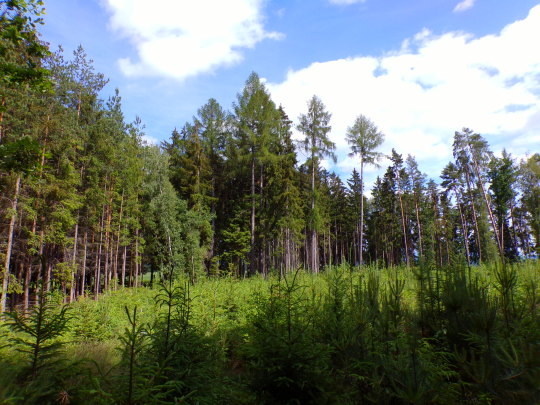
Litobořská část Vejrovin
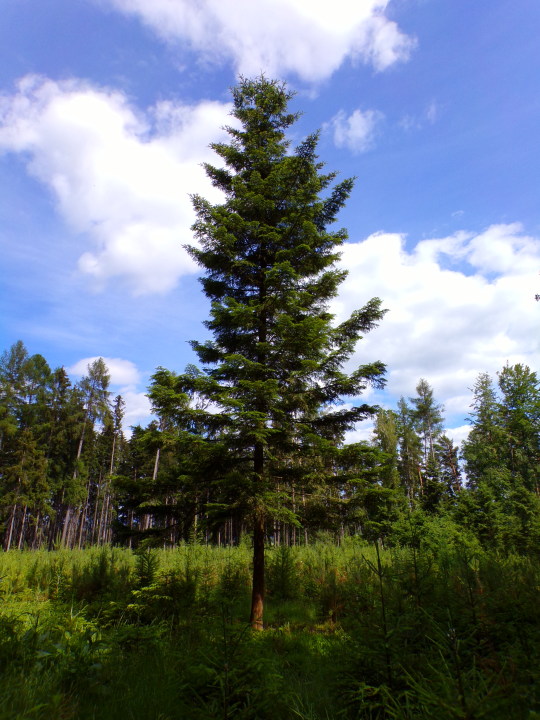
Litobořská část Vejrovin
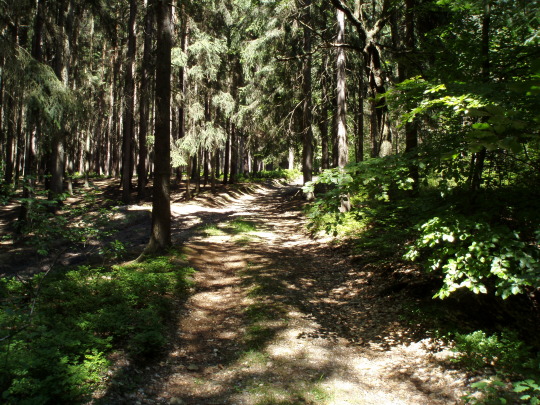
Cesta z Kalousova do Křížanova
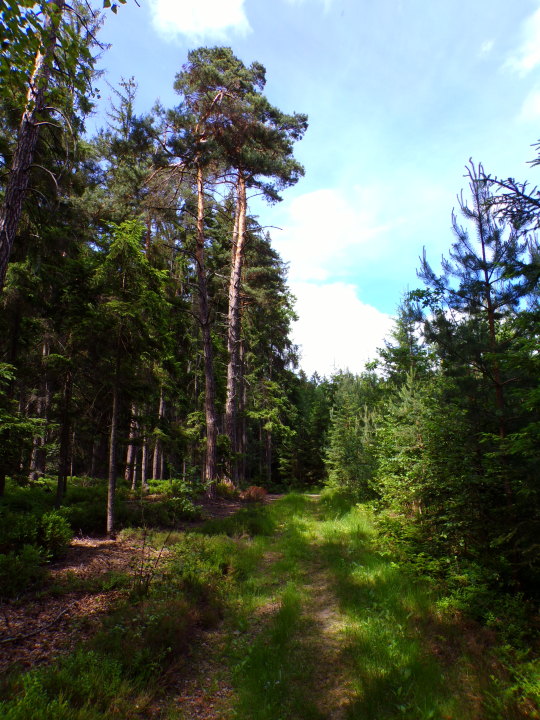
Vejroviny u Kalousova
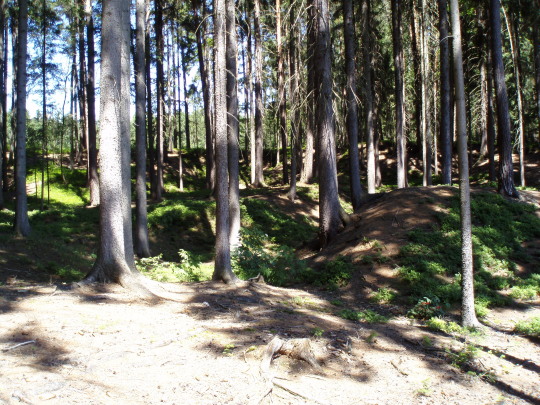
Vejroviny u Litoboře
0 notes
Photo

Červený Kostelec PREVENCE #radekbanga #represent #newera #neweracap #hiphop #life #wear #street #streetwear #ulice #fashion #prevention #children #pupils #students #show #motivation #motivace #inspirace #inspiration #kdyzchcestakzodokazes (v místě Cerveny Kostelec) https://www.instagram.com/p/BwrOqVJA7Fw/?utm_source=ig_tumblr_share&igshid=1o1nrhj4puhyd
#radekbanga#represent#newera#neweracap#hiphop#life#wear#street#streetwear#ulice#fashion#prevention#children#pupils#students#show#motivation#motivace#inspirace#inspiration#kdyzchcestakzodokazes
0 notes